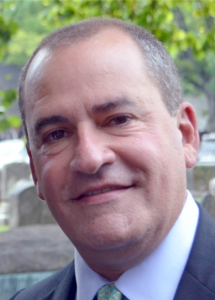Independent schools and their boards are at the precipice of a revolution in the education business. The schools that not only embrace change but very quickly institutionalize change into the culture will have the highest probability of remaining relevant. Every aspect of “the way we used to do it” must be challenged – first to survive and then to thrive.
There are roughly 35,000 independent schools in the United States. Considering innovative post-COVID-19 learning strategies, financial challenges at every turn and a forecasted shift in societal norms, the very existence of many of these institutions will be threatened. Since March, school leaders have been tactically responding to the immediate challenges, knowing that systemic decision-making lies ahead.
As schools engage in discussions about finances and sustainability, many heads of school and their leadership teams are finding themselves in the difficult position of potentially supporting strategies that may ultimately lead to their departure. There will be a natural proclivity to attack expenses, develop online summer camps for new revenue, and quantify sources of cash to handle pending annual deficits – anything to avoid the existential realities.
What’s required now is a willingness to have the hard discussions necessary to create short-term cash management plans and long-term growth strategies. School leaders must engage their boards immediately and consistently to explore potential mergers, division closings, moves to co-ed, divesture of assets and other long-term solutions.
These aren’t easy conversations, but they are necessary. Having sat and led boards for both educational and civic organizations, I offer these two key strategies for charting a growth strategy in a challenging environment.
1. Productive discussions about the direction of the school require critical input from board and leadership.
The board would most likely initiate the dialogue, as the ultimate responsibility for a school’s strategic direction lies with this group. Cultural change is always difficult, but those boards willing to engage will have the best chance to weather the storm.
I was a student at an all-boys military school from 1970 to 1982. In first grade, we dressed in gray uniforms and marched in formation. By 6th grade, girls were admitted to an institution that had remained single sex for 100 years. Looking back, the conversations that were occurring at the board level around the direction of the school in a changing demographic were instrumental in forever altering a culture that had flourished for a century.
2. To be effective, the initiative must be structured, consistent and manageable.
Consider starting with a small task force of deeply committed trustees and the head of school. Every idea should be considered, discussed, researched and ultimately accepted or discarded. Be very clear from the outset about goals and confidentially. People need to know that they may speak freely. Consider adding additional members based on expertise and relationships as the initiative progresses. Create a clear plan for the execution phase and discuss communication strategies.
“Never waste a good crisis” should provide ample cover to finally put the difficult discussions on the table. Out of this morass, there will be leaders who are able to confront these long-taboo subjects and chart a realistic course for their institutions, while championing a lasting culture of adaptability.
 About William “Billy” Yerman
About William “Billy” Yerman
Billy Yerman has significant nonprofit experience, with an emphasis on K-12 education. He brings expertise from a 30-year business career in real estate and title insurance management. His board leadership includes 12 years and counting on the Garrison Forest School board, where he presently serves on the Executive Committee and as Building and Grounds Chair. He is on the board of directors of Baltimore Educational Scholarship Trust and has served two tenures as the board chair of the Junior Achievement of Central Maryland. Other board roles include past president of the Greater Baltimore Board of Realtors and the Maryland Land Title Association. He has a B.A. in Business Administration from Emory University and a J.D. from the University of Maryland, School of Law. He and his wife Michele are the parents of three grown daughters.


